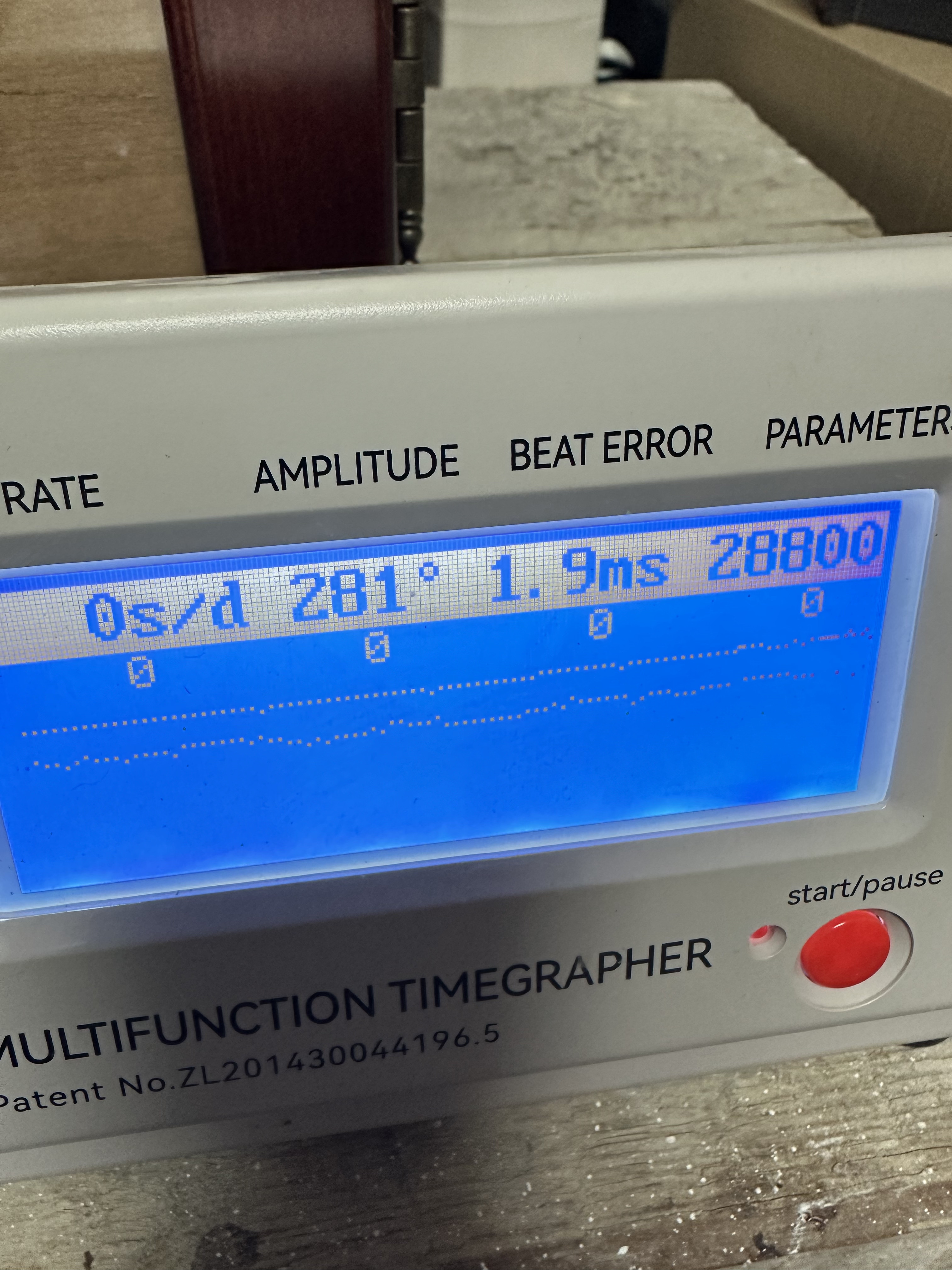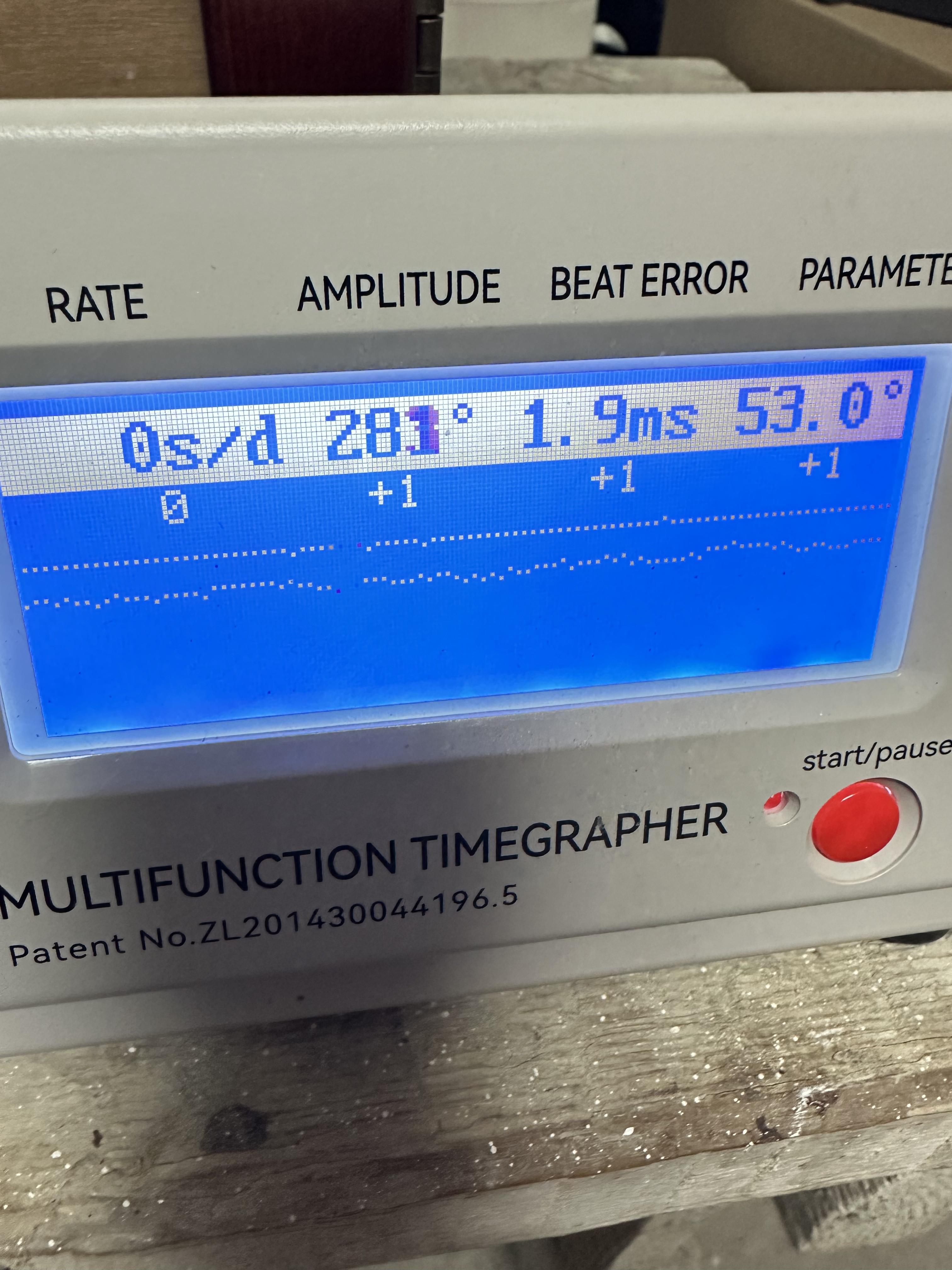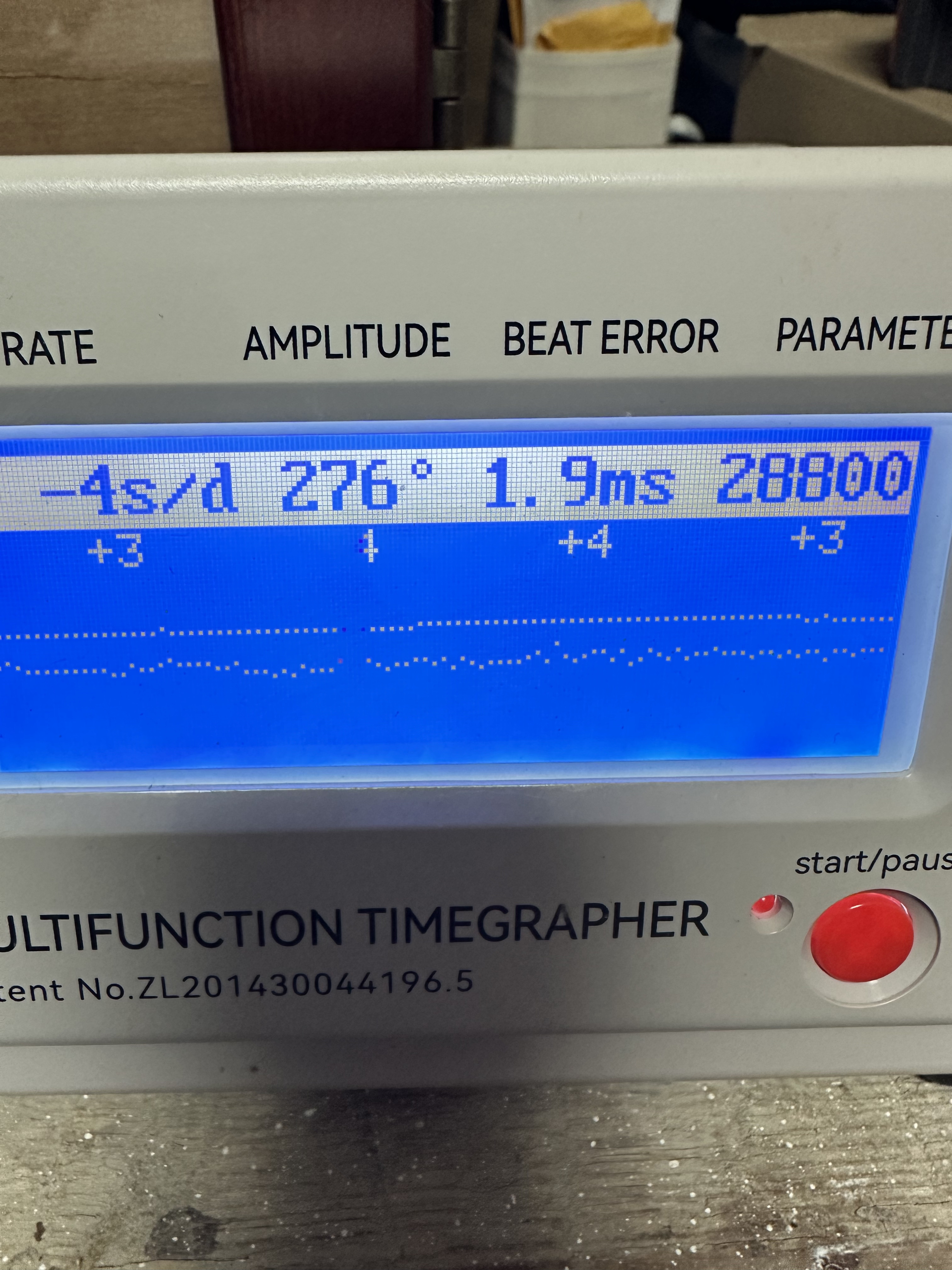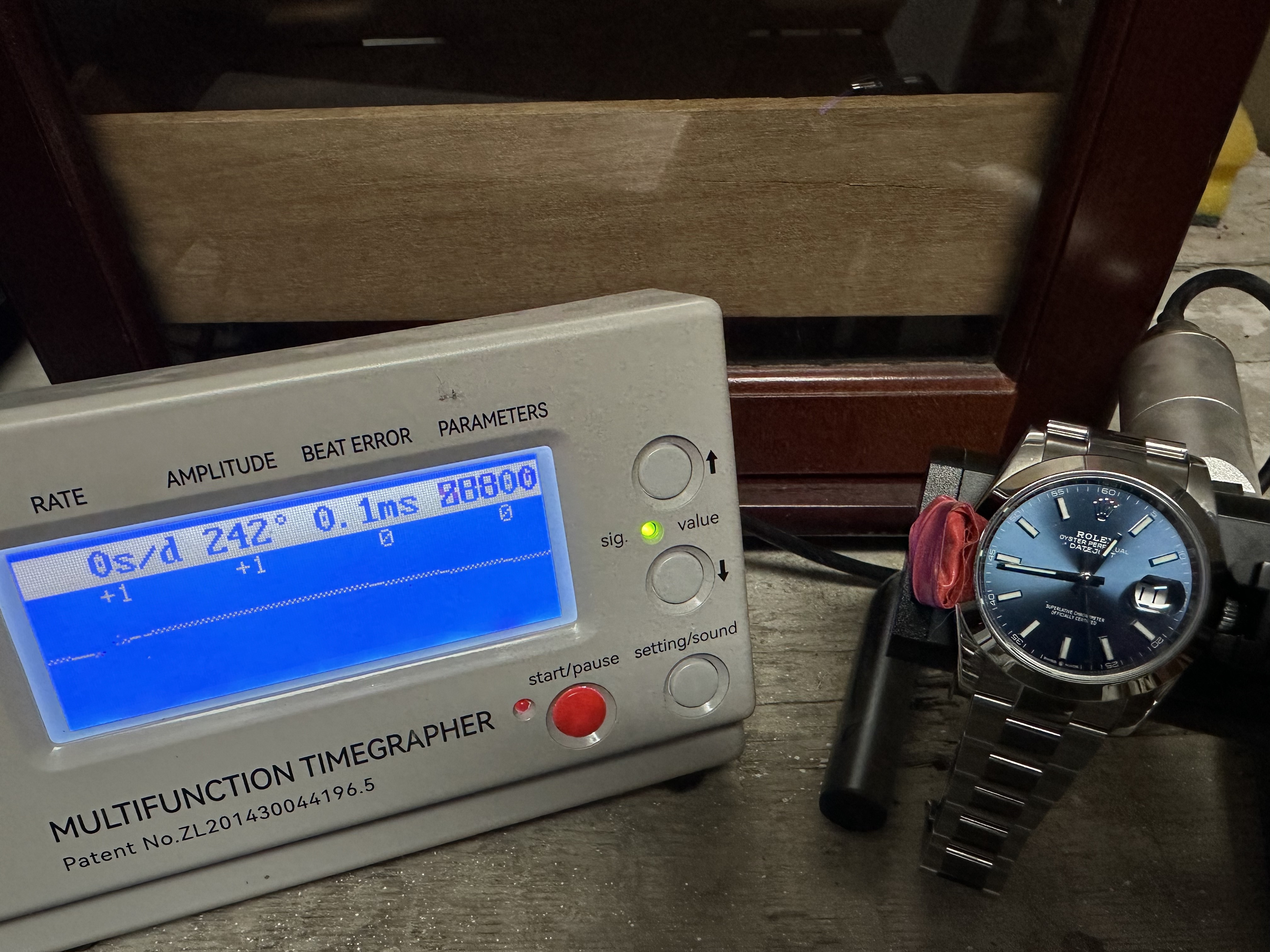- 13/3/16
- 1,307
- 2,058
- 113
I've been experimenting with measuring lift angle in a couple of 32xx clone movements. Our good friend @KJ2020 did an excellent test (password 180) which resulted in a 55° lift angle on his movement. I tested a couple here and it appears that 58° to 59° is the correct lift angle for mine. I will also say that my results seemed to vary for unknown reasons. I would assume it's due to the very small amount of mainspring tension used to get to - and not exceed - 180° balance swing for the test. A fully wound 3235 clone movement is usually a pretty solid timekeeper, but the accuracy starts to tank as the mainspring winds down and is nearly exhausted (tests of my genuine 3235 movement showed it maintained excellent accuracy even when the mainspring energy was nearly depleted). So that might explain the varying results I had gotten.
FWIW Rolex now uses a 53° lift angle for 32xx movements, which is lower than what they originally used when the movements first came out. The clones, however, are different.
Why is lift angle important? Without getting too technical and boring, it's an indication of the health of a movement, and knowing the correct lift angle is a must when testing on a timegrapher. An incorrect lift angle that's too low will indicate a low amplitude on the timegrapher and the user might think the movement is in poor health. Too high and the amplitude might appear excessively high or in a danger zone.
So we have test results that vary from 55° to 59°. I would say that unless you perform your own test, simply use a lift angle somewhere between the low and high tests we have done, and that should render an amplitude that's reasonably accurate.









